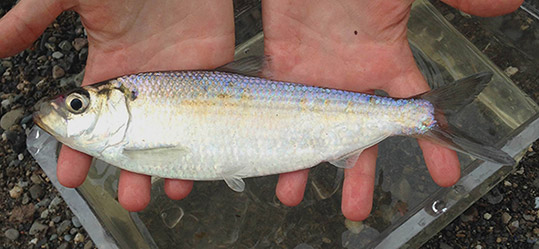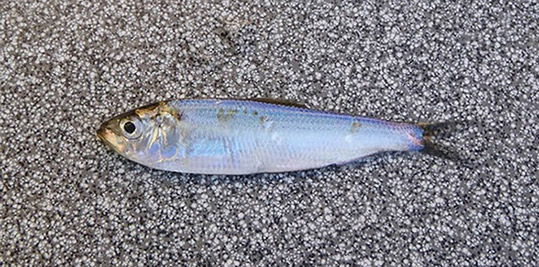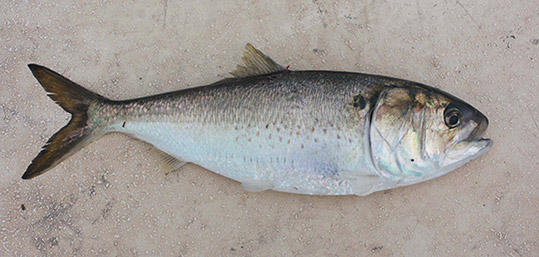Herring
Young herring are found in the Hudson in summer and early fall. Adults appear seasonally, depending on their life histories. Herring eat plankton, and are in turn eaten by many predatory fish. Except for the American shad, our herring are little more than a foot long as adults.
American shad are anadromous, born in fresh water but spending most of their lives at sea. Once the Hudson’s most important commercial fish, shad were netted during their spring spawning runs. Shad roe [egg sacs] are considered a delicacy. Females (roe shad) can weigh over six pounds and grow over two feet long; males (bucks) are smaller. However, in recent years American shad numbers have declined steeply, and in 2010 the Department of Environmental Conservation closed the fishery.

The alewife and blueback herring are also anadromous. Their spring spawning runs extend into tributaries, where they are often netted to be pickled for food or used as bait. The alewife has a larger eye and a deeper body than the blueback herring. Herring numbers have also declined in recent years.


The menhaden – also called mossbunker, bunker, or pogy – is a marine herring that enters the lower Hudson in summer after spawning offshore. At sea, it is netted and processed to make fish oil and protein meal for animal feeds. These herring have large heads and usually a spot behind the gill cover.

While sometimes caught in salt water, the gizzard shad is primarily a freshwater fish most common in the upper Hudson. The last ray of the dorsal fin is elongated.




